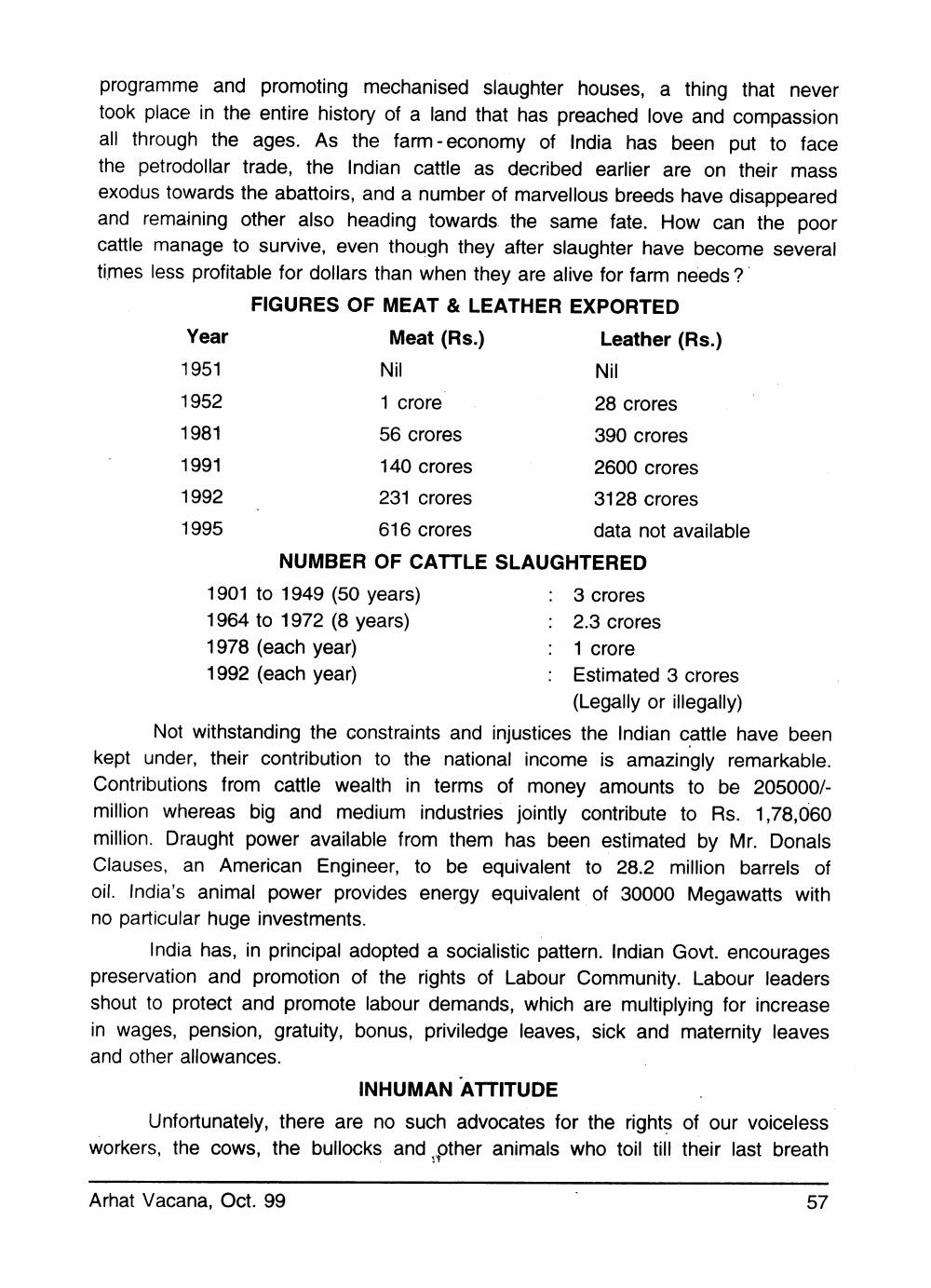________________
Nil
programme and promoting mechanised slaughter houses, a thing that never took place in the entire history of a land that has preached love and compassion all through the ages. As the farm - economy of India has been put to face the petrodollar trade, the Indian cattle as decribed earlier are on their mass exodus towards the abattoirs, and a number of marvellous breeds have disappeared and remaining other also heading towards the same fate. How can the poor cattle manage to survive, even though they after slaughter have become several times less profitable for dollars than when they are alive for farm needs?
FIGURES OF MEAT & LEATHER EXPORTED Year Meat (Rs.)
Leather (Rs.) 1951
Nil 1952 1 crore
28 crores 1981 56 crores
390 crores 1991 140 crores
2600 crores 1992 231 crores
3128 crores 1995 616 crores
data not available NUMBER OF CATTLE SLAUGHTERED 1901 to 1949 (50 years)
: 3 crores 1964 to 1972 (8 years)
: 2.3 crores 1978 (each year)
: 1 crore 1992 (each year)
: Estimated 3 crores
(Legally or illegally) Not withstanding the constraints and injustices the Indian cattle have been kept under, their contribution to the national income is amazingly remarkable. Contributions from cattle wealth in terms of money amounts to be 205000/million whereas big and medium industries jointly contribute to Rs. 1,78,060 million. Draught power available from them has been estimated by Mr. Donals Clauses, an American Engineer, to be equivalent to 28.2 million barrels of oil. India's animal power provides energy equivalent of 30000 Megawatts with no particular huge investments.
India has, in principal adopted a socialistic pattern. Indian Govt. encourages preservation and promotion of the rights of Labour Community. Labour leaders shout to protect and promote labour demands, which are multiplying for increase in wages, pension, gratuity, bonus, priviledge leaves, sick and maternity leaves and other allowances.
INHUMAN ATTITUDE Unfortunately, there are no such advocates for the rights of our voiceless workers, the cows, the bullocks and other animals who toil till their last breath
Arhat Vacana, Oct. 99
57




